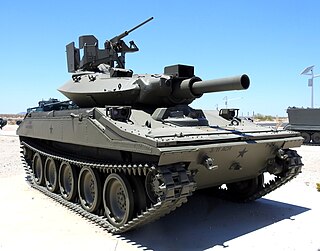
The M551 "Sheridan" AR/AAV was a light tank developed by the United States and named after General Philip Sheridan, of American Civil War fame. It was designed to be landed by parachute and to swim across rivers. It was armed with the technically advanced but troublesome M81/M81 Modified/M81E1 152 mm gun/launcher, which fired both conventional ammunition and the MGM-51 Shillelagh guided anti-tank missile.
Fort Cavazos is a United States Army post located near Killeen, Texas. The post is named after Gen. Richard E. Cavazos, a native Texan and the US Army’s first Hispanic four-star general. Formerly named Fort Hood for Confederate General John Bell Hood, the post is located halfway between Austin and Waco, about 60 mi (97 km) from each, within the U.S. state of Texas. The post is the headquarters of III Armored Corps and First Army Division West and is home to the 1st Cavalry Division and 3rd Cavalry Regiment, among others.
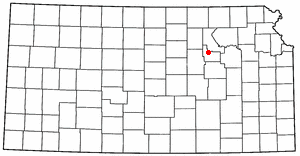
Fort Riley is a United States Army installation located in North Central Kansas, on the Kansas River, also known as the Kaw, between Junction City and Manhattan. The Fort Riley Military Reservation covers 101,733 acres (41,170 ha) in Geary and Riley counties. The portion of the fort that contains housing development is part of the Fort Riley census-designated place, with a residential population of 7,761 as of the 2010 census. The fort has a daytime population of nearly 25,000. The ZIP Code is 66442.

The 1st Infantry Division (1ID) is a combined arms division of the United States Army, and is the oldest continuously serving division in the Regular Army. It has seen continuous service since its organization in 1917 during World War I. It was officially nicknamed "The Big Red One" after its shoulder patch and is also nicknamed "The Fighting First." The division has also received troop monikers of "The Big Dead One" and "The Bloody First" as puns on the respective officially sanctioned nicknames. It is currently based at Fort Riley, Kansas.

The 24th Infantry Division was an infantry division of the United States Army that was inactivated in October 1996. Formed during World War II from the disbanding Hawaiian Division, the division saw action throughout the Pacific theater, first fighting in New Guinea before landing on the Philippine islands of Leyte and Luzon, driving Japanese forces from them. Following the end of the war, the division participated in occupation duties in Japan, and was the first division to respond at the outbreak of the Korean War. For the first 18 months of the war, the division was heavily engaged on the front lines with North Korean and Chinese forces, suffering over 10,000 casualties. It was withdrawn from the front lines to the reserve force for the remainder of the war after the second battle for Wonju, but returned to Korea for patrol duty at the end of major combat operations.

Fort Leavenworth is a United States Army installation located in Leavenworth County, Kansas, in the city of Leavenworth. Built in 1827, it is the second oldest active United States Army post west of Washington, D.C., and the oldest permanent settlement in Kansas. Fort Leavenworth has been historically known as the "Intellectual Center of the Army."
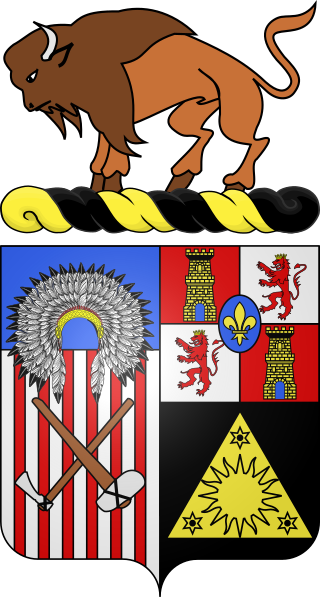
The 10th Cavalry Regiment is a unit of the United States Army. Formed as a segregated African-American unit, the 10th Cavalry was one of the original "Buffalo Soldier" regiments in the post–Civil War Regular Army. It served in combat during the Indian Wars in the western United States, the Spanish–American War in Cuba, Philippine–American War and Mexican Revolution. The regiment was trained as a combat unit but later relegated to non-combat duty and served in that capacity in World War II until its deactivation in 1944.

Fort Hays, originally named Fort Fletcher, was a United States Army fort near Hays, Kansas. Active from 1865 to 1889 it was an important frontier post during the American Indian Wars of the late 19th century. Reopened as a historical park in 1929, it is now operated by the Kansas Historical Society as the Fort Hays State Historic Site.

The 166th Aviation Brigade is an aviation training brigade of the United States Army headquartered at Fort Cavazos, Texas. It was a subordinate unit of First Army – Division West. An "AC/RC" formation, the 166th Aviation Brigade was the sole organization responsible for the post-mobilization training of United States Army Reserve & National Guard aviation units. The unit was formerly designated as 3rd Brigade, 75th Division.
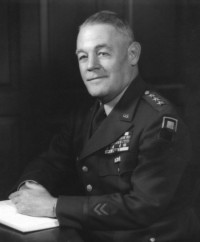
Thomas Wade Herren was a United States Army officer and combat commander whose career spanned from World War I to the post-Korean War era.
The United States Army Cavalry School was part of a series of training programs and centers for its horse mounted troops or cavalry branch.

Marshall Army Airfield (MAAF) is a military airfield located on Fort Riley, Kansas, United States. It was opened in 1921. The primary mission of MAAF is to provide fully integrated fixed base helicopter operations for the Combat Aviation Brigade, 1st Infantry Division.
The U.S. 41st Infantry Regiment is a regiment of the United States Army. Its 1st Battalion is currently assigned to the 2nd Stryker Brigade Combat Team, 4th Infantry Division. Its 3rd Battalion was assigned to the 1st Armored Brigade Combat Team, 1st Armored Division, which was replaced in 2018 by 4th Battalion, 70th Armor Regiment, 1st Brigade Combat Team, 1st Armored Division.

The 15th Cavalry Regiment is a cavalry regiment of the United States Army. It was one of the Expansion Units originally established for the Spanish–American War, but has been a general workhorse unit ever since.

Harry Dwight Chamberlin was a career officer in the United States Army. A veteran of the Moro Rebellion, Pancho Villa Expedition, World War I, and World War II, he attained the rank of brigadier general, and was most notable for his command of several Cavalry units, including 1st Squadron, 8th Cavalry Regiment, 1st Squadron, 14th Cavalry Regiment, 2nd Cavalry Regiment, the Cavalry Replacement Center at Fort Riley, and 4th Cavalry Brigade, 2nd Cavalry Division. During World War II, he commanded the New Hebrides Task Force, Southwestern Security District, and Fort Ord.

Constructed in 1855 of native limestone, the Custer House is a historic house museum located on Fort Riley in Kansas, United States. It reflects Fort Riley's earliest history and authentically depicts military home life on the western frontier during the Indian Wars Period.
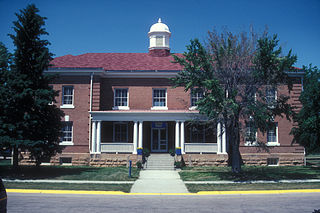
Fort Meade, originally known as Camp Sturgis and later Camp Ruhlen, is a former United States Army post located just east of Sturgis, South Dakota, United States. The fort was active from 1878 to 1944; the cantonment is currently home to a Veterans Health Administration hospital and South Dakota Army National Guard training facilities. Much of the former reservation is now managed by the Bureau of Land Management as the Fort Meade Recreation Area. It is also home of Fort Meade National Cemetery. Fort Meade was established in 1878 to protect illegal white settlements on the Great Sioux Reservation in the northern Black Hills, especially the nearby gold mining area around Deadwood. Several stage and freighting routes passed through Fort Meade en route to Deadwood.

Fort Clark was a frontier fort located just off U.S. Route 90 near Brackettville, in Kinney County, Texas, United States. It later became the headquarters for the 2nd Cavalry Division. The Fort Clark Historic District was added to the National Register of Historic Places on December 6, 1979. The Commanding Officer's Quarters at Fort Clark were designated a Recorded Texas Historic Landmark in 1988. The Fort Clark Guardhouse became a Recorded Texas Historic Landmark in 1962. The Fort Clark Officers' Row Quarters were designated a Recorded Texas Historic Landmark in 1991.

Frederick Gilbreath was a general officer in the United States Army who commanded the San Francisco Port of Embarkation and the South Pacific Base Command during World War II.
Chief (1932–1968) was a horse owned by the United States Army. He has been credited as the Army's last living operational cavalry mount. Mustered into service in 1940 in Nebraska, Chief was posted to Fort Riley and served with the 9th and 10th Cavalry Regiments before being sent to the U.S. Army Cavalry School. In 1949–1950, he was retired and put out to pasture; he died in 1968.

















